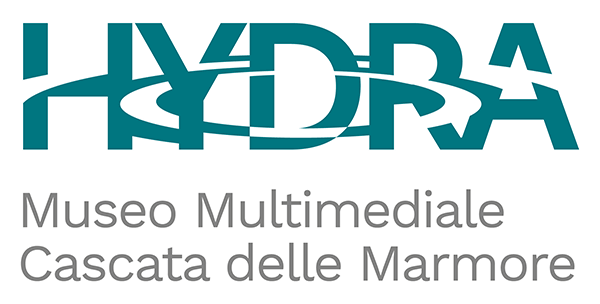The Water We Want 2023 - Videos
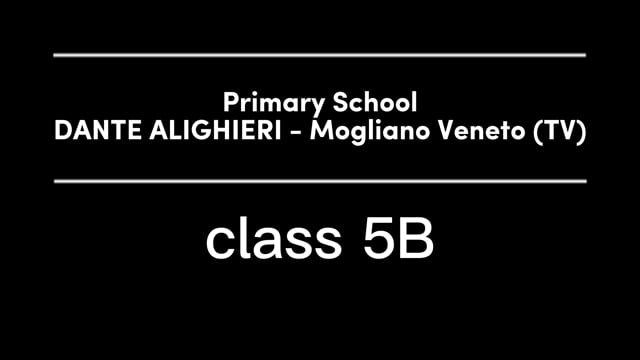
Identifier: #34

Italy
Water Museum of Venice/Consiglio di Bacino 'Laguna di Venezia'
Water to Save? Let's Do It at School!
Primary School Dante Alighieri, Mogliano Veneto, Italy. Class 5B.
The 5B class of Dante Alighieri primary school in Mogliano Veneto recently participated in an educational project aimed at raising awareness among students about the importance of preserving water as a vital and sustainable resource for our planet. Through assignments and group work, the class learned how often drinking water is wasted and how water scarcity is becoming an increasingly significant problem worldwide. For this reason, the students studied the importance of collecting and reusing rainwater for daily activities that do not require the use of drinking water. To demonstrate what they had learned, divided into five groups, they collaborated to create a model that showed their own school with a green roof system, which not only could cool the indoor environments and filter the air but above all collect rainwater and transport it through
pipelines to the school's bathrooms, garden and external taps to provide water for cleaning the school. The video shows the design and construction process of the model, highlighting the importance of more responsible behavior towards water usage and the environment. Thanks to this project, students have acquired new knowledge and skills that can be used in daily life to contribute to preserving the environment and natural resources.

Identifier: #28

China
National Water Museum of China
Tears of Water
Zhejiang Medical Technology School, Hangzhou, China. Yu Binbin.
Human destruction and unreasonable exploitation have lead to deforestation. They are the cause of soil erosion and frequent floods and inundation. Drying-up of rivers and lakes, ground subsidence caused by excessive groundwater exploitation, and frequent extreme weather related to global warming have huge impacts on human life. In this animated video clip, I use traditional Chinese calligraphy techniques to symbolize different water crises we are facing, to arouse people's awareness toward the true value of water resources and ask people to cherish the moment.
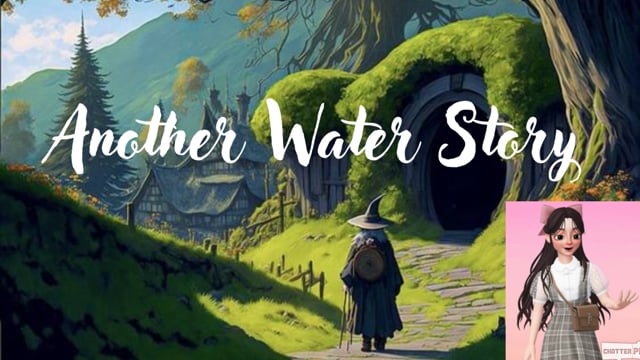
Identifier: #36

Romania
Water Museum “Leonida Truta”, Cluj-Napoca
Another Water Story
"Ion Creanga" Gymnasium School, Cluj, Romania. Class 7E.
Our project titled "Another Water Story" was created with the hopes of raising awareness about water. We developed everything like a story because children love stories, and they tend to pay attention to what they love. Children have the opportunity to learn important elements related to water – water resources, water's role in the past, and how to protect water against degradation and depletion. Our humanity's intervention to water's health.

Identifier: #30

Portugal
Lisbon Water Museum
Astro- “Mission 360º – Healthy Planet – ODS 12”
CED Nossa Senhora da Conceição (Casa Pia), Lisbon, Portugal. 3rd Grade.
The film tells the story of two astronauts who lived on a planet similar to Earth whose
inhabitants got out of control in the excessive production of garbage and ended up destroying their planet through total drought. After managing to escape, they landed on our planet but soon realized that, if they didn’t take any action, the exact same thing would happen – no water and total destruction! So they began a mission to help people of planet Earth realize that their actions are reflected in the well-being of all of us, teaching them to recycle garbage and keep our waters as cleans as possible!
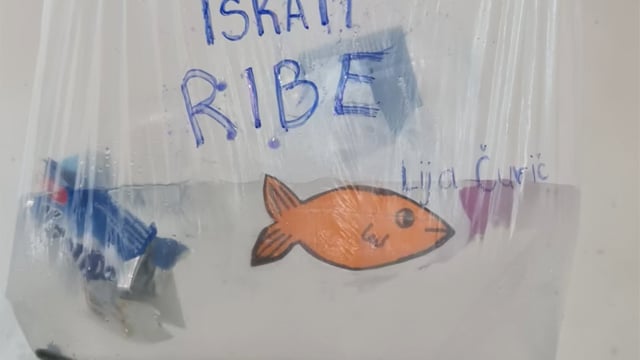
Identifier: #29

Slovenia
Posavje Museum Brežice
A Long Drawing on Water / Dolga Risba na Vodi
Gymnasium Brezice, Brezice, Slovenia. Class 1C.
We took clear plastic bags on roll and drew or wrote on them with marker what water means to us or what we want it to be. Into the bag we inserted a figurine of a plant, animal, or garbage, poured water from the tap and tied them if possible. Above the sink we photographed all the 24 art objects one after the other. We have collectively created a captured water drawing of fear, worry, and desire on fresh water, each hour of our 24 hours of time with the drawing-bag.
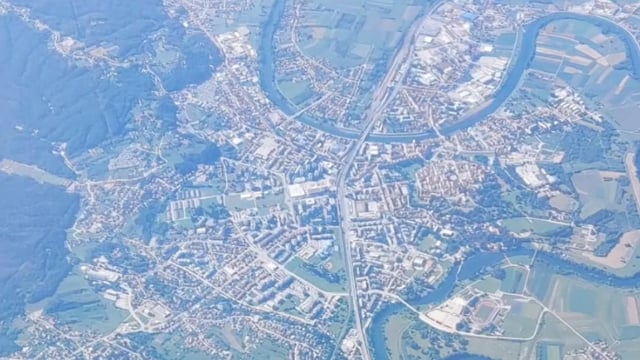
Identifier: #38
Croatia
Aquatika – Freshwater Aquarium Karlovac, Croatia.
Rivers in the City of Karlovac
Dubovac Primary School, Karlovac. Esma Sabanovic.
Karlovac is a city in central Croatia. One of the few cities in Croatia that knows the exact date of the start of its construction. Karlovac carries the epithet of a "city of parks", the peculiarity of Karlovac are the four rivers that pass through the city - Korana, Kupa, Dobra and Mreznica, for which it is known as a city on four rivers. The traditional song in the background of the video is proof that the love of water has always been nurtured in Croatia.
Korana: On the rocks in the Korana canyon nests a grey falcon, one of the fastest birds in the world. The richness of flora is evidenced by 1,267 known plant species, of which 75 are endemic and as many as 55 different species of orchids.
Kupa: The upper course of the River Kupa is called the Miraculous Valley of Butterflies because of the richness of flora and fauna. More than 250 species of birds have been recorded on the River Kupa and in its immediate vicinity.
Mreznica: What sets Mreznica apart from other karst rivers in Croatia is as many as 93 travertine waterfalls.
At the bottom of the Mreznica and on its shores, there are springs and sources of drinking water.
Dobra: Dulin sinkholes and Medvedica cave are connected in one underground cave system with a total horizontal length of the channel of 16,396 meters. Rijaka Dobra has a large canyon in which there is a lot of flora and fauna.
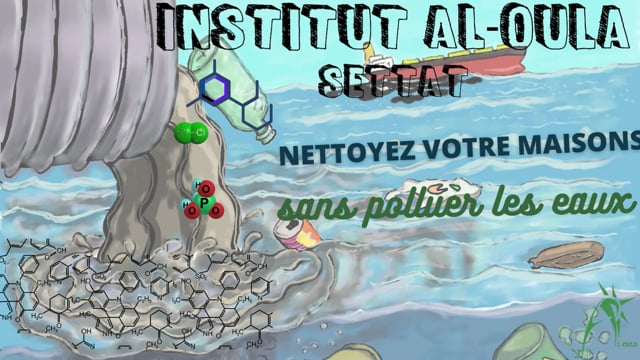
Identifier: #37
Morocco
Musée Mohammed VI - Aman, Marrakech
Household products: Aquatic environments in danger
Institut Al-Oula, Settat, Morocco. Nissrine Hadar.
"Aquatic environments are polluted by waste and chemical molecules from various sources including industry, agriculture, construction, and domestic use. Wastewater treatment plants are not able to eliminate micropollutants, leading to contamination of water sources. Common household products contain harmful substances like phosphate which promotes eutrophication. To address this issue, sensitization workshops were organized followed by proposals for simple, effective and economical recipes
for making household products from natural and biodegradable products like vinegar, salt, baking soda, black soap, washing soda and citric acid. Cold process soaps were preferred to industrial soaps as they do not contain polluting substances. By following these steps, it is possible to reduce household product consumption, decrease wastewater pollution, and avoid packaging waste. Protecting health and the environment can also lead to savings."
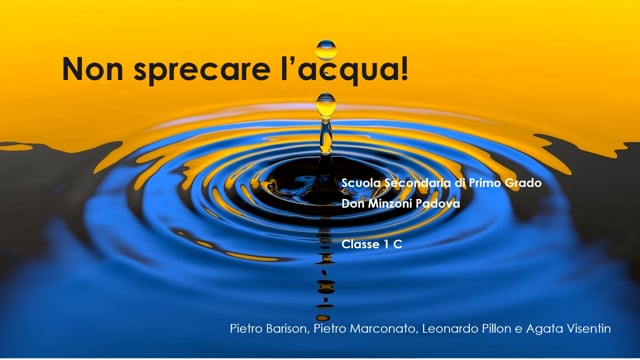
Identifier: #35
Italy
Museum of River Navigation of Battaglia Terme
Don't Waste Water!
Scuola primaria Don Minzoni, Padova, Italy. Four students of class 1C.
Our work consists of a multimedia presentation, which contains a drawing, a song invented by us and some meaningful photos about saving water. Our idea is to convey the importance of water and not to waste it. In fact, a verse of the song says “Water is vital and essential for the environment” to convey the importance of the largest known source of life on Earth. Our last slide bears the following words “Water is our future and without it we can't live”. This means that water is very important and that it is thanks to it that life exists.
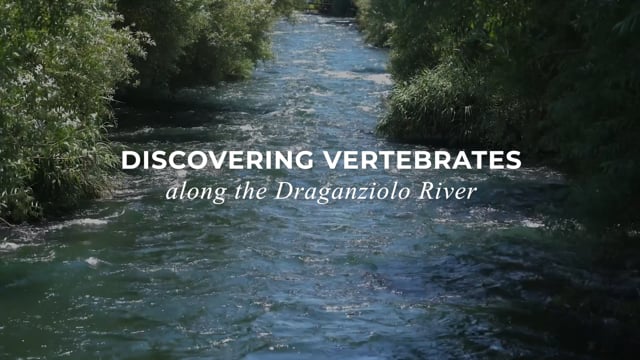
Identifier: #33
Italy
Water Museum of Venice/Consorzio di Bonifica 'Acque Risorgive'
Discovering Vertebrates along the Draganziolo River
A. Stiffoni Primary School, Piombino Dese, Italy. Class 4A and 4B.
Discovering vertebrates along the Draganziolo River. 1- Observation of the map of Piombino Dese and identification of the main waterways, especially the Draganziolo River which passes within the town center. 2- Brief explanation of the characteristics of resurgence rivers. 3- Viewing of a video about the Draganziolo river made by the Acque Risorgive Reclamation Consortium and the International Center for Water Civilization ONLUS. 4- Importance of wetlands: brainstorming to gather information learned in workshops conducted with experts from the “Love Your River” project. 5- Through specially prepared photos, observation of 45 vertebrates living in our wetlands and classification of them into the 5 classes of vertebrates. 6- Study of descriptions of some animals in small groups and vocabulary enrichment. 7- Exposure to the teacher and classmates of the characteristics of different animals. 8- Drawing of the animal by observing the prepared pictures. 9- Preparing the background and title for the billboard. 10- Assembly of all materials produced, including qr codes with the proper descriptions
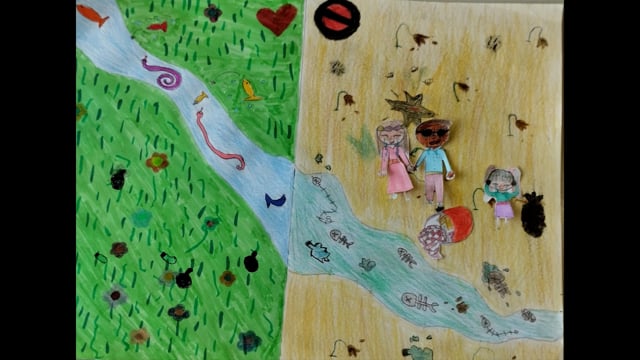
Identifier: #32
Portugal
Lisbon Water Museum
Water Pollution is Sad!
Academia de Música Costa Cabral, Porto, Portugal. Alice Mendes, Lara Lima, Maria Inês Ribeiro.
This stop motion animation intends to call for reflection on the impact of pollution in territories close to freshwater channels, as well as the rivers themselves. In this short film, the sources of pollution are represented by a character – the villain – who is responsible for the degradation of the river's water quality and the ecosystem dependent on it.

Identifier: #31
Portugal
Lisbon Water Museum
The Sweet Water Song
Elementary School José Régio, Portalegre, Portugal. 5th Grade.
The video presents a song about fresh water, created especially for this initiative. This song addresses the importance of fresh water for the survival of all living beings and for the existence of life on our planet. Some measures that we can all take, to preserve this precious asset are also mentioned, emphasizing that these measures are everyone's responsibility. With this song, the students intend to address this topic, that is so important for all the inhabitants of the planet, in a more appealing way.
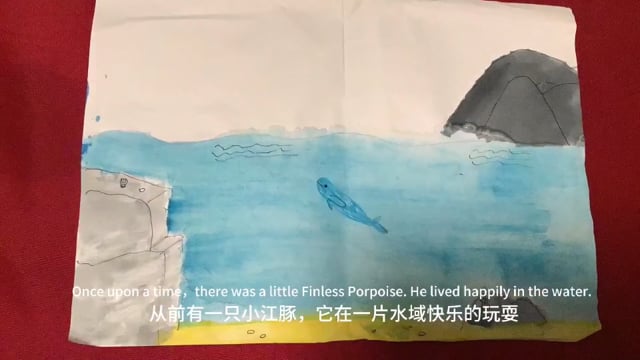
Identifier: #27
China
National Water Museum of China
Yangtze Finless Porpoise
Hangzhou Yungu School, Hangzhou, China. Fu Zixuan, Han Yi, Wu Ruizhe.
In recent decades, more and more species have been dying out. The Yangtze Finless Porpoise, the leading role in the video, is among the endangered species. The Yangtze Finless Porpoise, living on fish, shrimp, and squid, is the national first-class protected animal in the middle and lower reaches of the Yangtze River, mainly in Dongting Lake. Poyang Lake, and the main stream of the Yangtze River. On July 24, 2018, a scientific survey estimated the number of Yangtze River Finless Porpoises as approximately 1012. On February 28, 2023, the number reached 1249 because of the protection for wild animals. Our government also set up more reserves prohibiting the approach of fishermen to protect it. Through this video we want to appeal for everyone's protection for wild animals in the world.
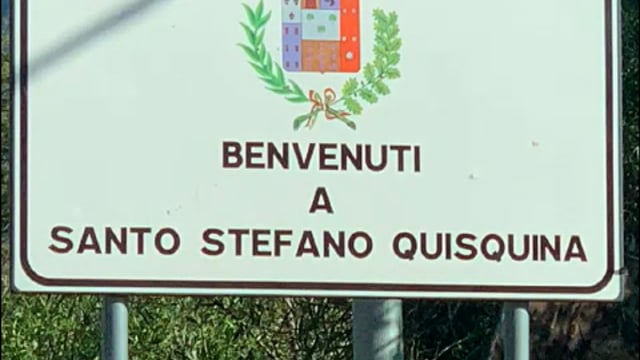
Identifier: #26
Italy
Paesi dell'Acqua
Lu Scruscriu di l'Acqua / The Sound of the Water
I.C. Maestro Lorenzo Panepinto, Santo Stefano Quisquina (AG), Italy. Classroom III, first grade.
The video collects drawings, photographs, and short films, accompanied by the audio of the natural sound of the waters and an unpublished poem in Sicilian dialect, on the fountains and small fountains in the town of Santo Stefano Quisquina, a village in the Agrigento hinterland that has always been renowned for the quality of its spring waters.
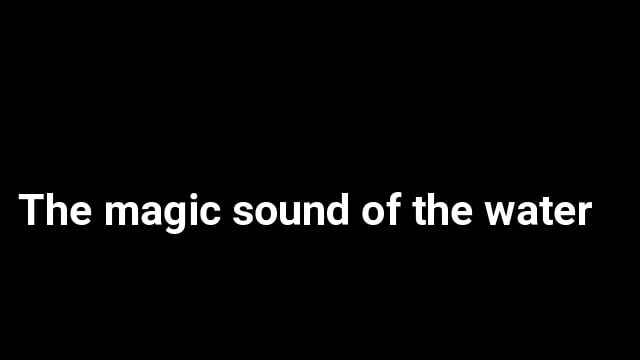
Identifier: #25
Italy
Ecomuseum Martesana, Milano
The Magic of the Sound of Water
Istituto Comprensivo “Paolo e Larissa Pini” – “Martiri di Gorla”, Milano, Italy. 3D.
Water makes beautiful sounds and creates enchanting magic. So why not try to reproduce these surprising sounds with water of different colors and recycled materials? Boys and girls are enchanted listening to the wonders produced by water until they explode in a single song: we are the water!
